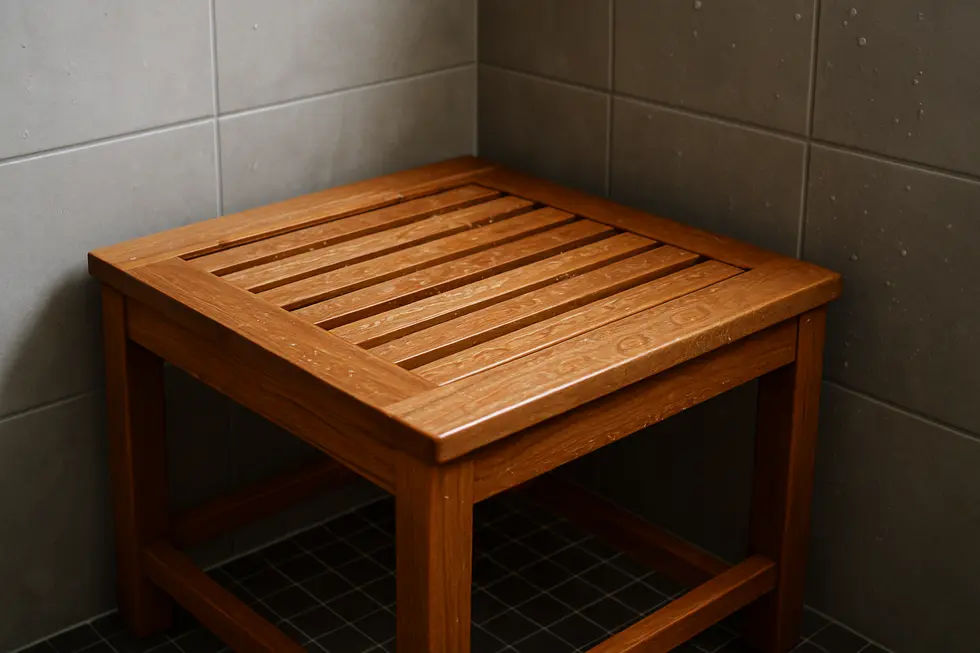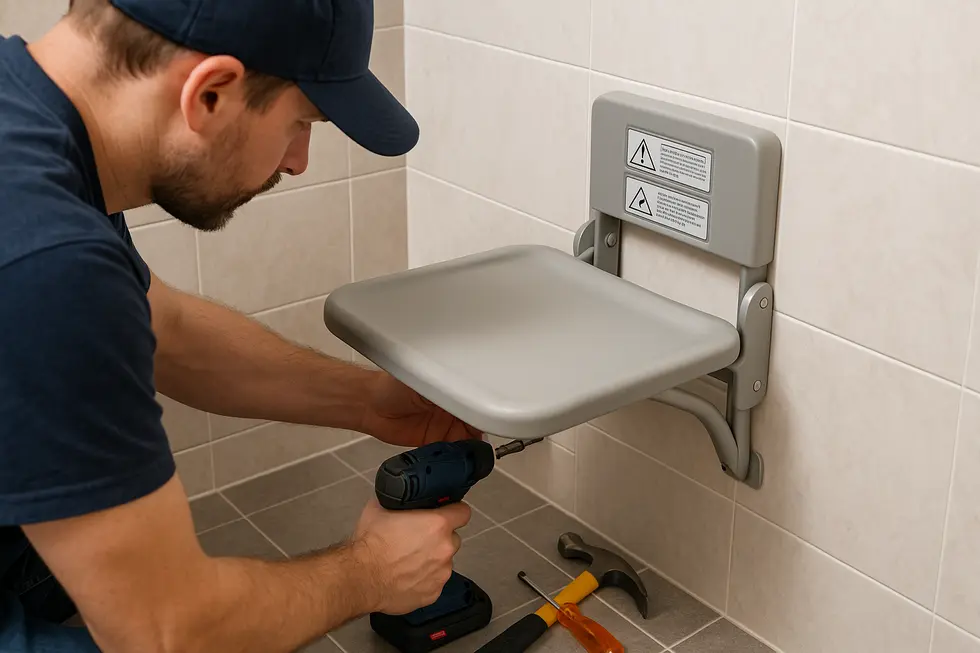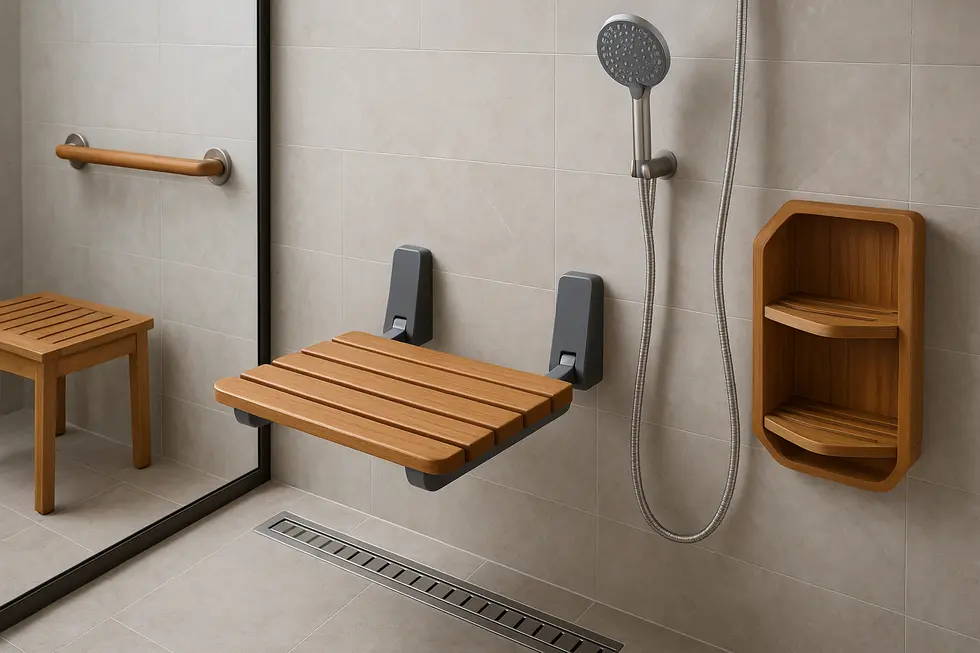Shower Seat
Innovative and Sustainable Shower Seats for Every Home
As bathrooms evolve to become more accessible and sustainable, water-resistant shower seats are at the forefront of this transformation. These seats not only offer safety and comfort, especially suited for families, but are also a step toward smart design and sustainability. This article will delve into the material innovations shaping these seats, the installation standards ensuring safety, and the market trends promoting sustainable practices in their manufacturing.
From Teak to Nanocoatings: How Advanced Materials Keep Shower Seats Water-Resistant and Beautiful

Moisture is relentless, so the materials chosen for a shower seat must perform like marine gear: shrugging off saturation, resisting microbes, and doing it for decades. The gold standard remains sustainably harvested teak. Kiln-drying drives out sap, and the wood’s own oils create a natural barrier that blocks mildew without the need for harsh chemical finishes. Teak also expands and contracts predictably, so joints stay tight instead of wobbling over time.
Yet hardwood is only one chapter in the innovation story. Lightweight aluminum frames have surged in popularity because they pair thin profiles with surprising strength. When powder-coated with hybrid epoxy-polyester blends, aluminum resists pitting even in salt-air coastal bathrooms. Many wall-mounted seats now use concealed aluminum brackets that bolt directly to blocking, streamlining the process of installing a wall-mounted shower seat for both remodelers and DIY users (link).
Engineers are also borrowing from yacht construction. High-density polyethylene (HDPE) cores wrapped in glass-smooth acrylic skins create seats that feel warm to the touch, drain instantly, and meet the 400-lb load requirement in ADA 610.3. Because pigments are baked into the sheet, scratches reveal matching color instead of a white scar, prolonging cosmetic life.
For designers who crave a softer aesthetic, synthetic rattan made of UV-stabilized polyethylene strands offers the woven look of wicker without the rot. Each strand is extruded with anti-fungal additives, then hand-wrapped over a stainless steel frame. The result tolerates poolside sun as comfortably as steamy showers, giving architects freedom to blur indoor–outdoor boundaries.
Finally, the frontier is microscopic. Physical vapor deposition (PVD) and nano-silica topcoats create hydrophobic surfaces that make water bead and roll away, reducing soap scum. Early tests show a 37 % drop in bacterial colonization compared with untreated plastic, a boost welcomed by households focused on hygiene.
Material choice ultimately balances weight capacity, tactile comfort, and aesthetics, but innovation ensures users no longer sacrifice style for safety. For a deeper look at responsibly sourced teak craftsmanship, visit this external resource: https://www.teakculture.com/products/teak-luxury-shower-stool-bench-seat-with-leveling-feet-teak-oil-finish-large-19-h-x-25-l-x-14-w
Anchoring Confidence: Meeting Codes and Maximizing Safety When Installing Water-Resistant Shower Seats

Properly setting a water-resistant shower seat is less about attaching hardware and more about engineering security into the wettest room in the house. Everything starts with the wall or floor substrate. Concrete backer board, solid blocking, or ¾-inch plywood sheathing behind tile provides the shear strength required by ADA 610.3, which demands seats withstand at least 250 lbs of force; premium designs are now tested to 400–800 lbs. Before a single fastener is driven, confirm moisture levels are below manufacturer limits and that the surface is plumb—shims compensate for the minor deviations common in older bathrooms.
Fastener choice is the next safeguard. Marine-grade stainless or epoxy-coated structural screws resist corrosion better than standard galvanized hardware, preserving integrity through thousands of steam cycles. Pair them with compression anchors rated above the seat’s published capacity. Installers increasingly follow a “four-point load triangle,” positioning two upper fasteners into blocking and two lower into studs to spread weight and reduce torsion.
Seat geometry also promotes safety. A gentle 5–7° forward pitch lets water drain immediately, limiting biofilm growth and slip risk. Bubble levels integrated into some mounting brackets remove guesswork—if the indicator sits between lines, the slope meets code. For fold-down models, spring-assist hinges must open or close with under five pounds of force so users with limited grip strength stay independent.
Dimensions complete the equation. ADA prescribes a sitting height of 17–19 inches and a minimum 15-inch depth. Mark these lines on the finished tile, not the raw stud, to avoid post-grout surprises. Once hardware is torqued to spec and silicone seals every penetration, test with static loads incrementally up to rated weight.
Homeowners seeking additional visual guidance can review this complementary walkthrough on mounting techniques that pairs well with the code-centric points above. For installers who prefer manufacturer-supplied diagrams and hardware lists, consult the provider’s full installation checklist before the first tile is drilled.
Sustainable Innovations and Shifting Market Forces Behind the Next-Generation Water-Resistant Shower Seat

Water-resistant shower seats have quietly moved from niche accessibility aids to mainstream bathroom fixtures, and the manufacturing landscape is evolving just as quickly. Three converging forces—material science, consumer expectations, and regulation—now dictate what ends up under the average showerhead.
On the factory floor, suppliers are abandoning traditional zinc-plated steel in favor of industrial ribbed aluminum and marine-grade stainless brackets. These alloys shrug off corrosion while keeping profiles slim enough for the minimalist “floating bench” look prized by designers. Pair that hardware with high-density polyethylene cores or kiln-dried plantation teak slats and you achieve a seat that can hold 400 lb yet survive years of soap, steam, and shampoo. CAD-driven ergonomics add a subtle five-degree pitch that meets ADA 610.3 load criteria without bulk, proving that accessibility no longer means industrial appearance.
Sustainability concerns reinforce these engineering shifts. Governments pushing circular-economy targets reward manufacturers who source FSC-certified timber or recyclable polymers, and many brands now publish cradle-to-gate carbon metrics alongside weight limits. Self-cleaning nanocoatings and embedded antimicrobial agents reduce the frequency—and chemical intensity—of maintenance, trimming the downstream environmental footprint. Even installation practices are greener: retrofit-friendly, concealed-bracket kits let homeowners upgrade existing tile rather than rip out entire enclosures, extending building life cycles. A quick scroll through guides on installing a wall-mounted shower seat shows the popularity of these DIY approaches (https://pegabidet.com/2025/06/09/install-wall-mounted-shower-seat/).
Macro-economic data confirm the momentum. Bathroom safety products hit USD 5.4 billion in 2023, and shower seats alone account for nearly one-fifth of that figure with a 6 % CAGR forecast through 2030. Aging demographics contribute, but so does rising new construction in regions adopting universal-design codes. Supply chains are adapting in parallel; after export bans in Myanmar, teak procurement migrated to certified plantations in Indonesia and Costa Rica, lengthening lead times yet boosting traceability.
Looking ahead, expect more modular platforms, recyclable aluminum composites, and brackets that double as grab bars—products built to outlive bathroom remodels and, importantly, their first owners. For consumers, the result is a seat that is safer, sleeker, and greener than ever before. (External reference: https://www.teakculture.com/products/teak-luxury-shower-stool-bench-seat-with-leveling-feet-teak-oil-finish-large-19-h-x-25-l-x-14-w)
Final thoughts
The integration of water-resistant shower seats into modern bathrooms epitomizes the intersection of safety, sustainability, and design innovation. By selecting the right materials, adhering to installation standards, and embracing market trends, families can significantly enhance their bathroom’s functionality and ecological footprint. Investing in such products contributes not only to immediate comfort and safety but also supports long-term environmental goals.
Experience a new standard of clean with PEGABidet—designed for comfort, safety, and independence. Join thousands who trust us to make personal care simple and dignified. Contact us contact@pegabidet.com
About us
PEGABidet is a brand owned by L.A NEXTGEN LLC, based in California. We design intuitive, hygienic, and accessible bathroom solutions that prioritize safety, dignity, and independence. Our mission is to make personal care effortless and empowering for people at every stage of life.

